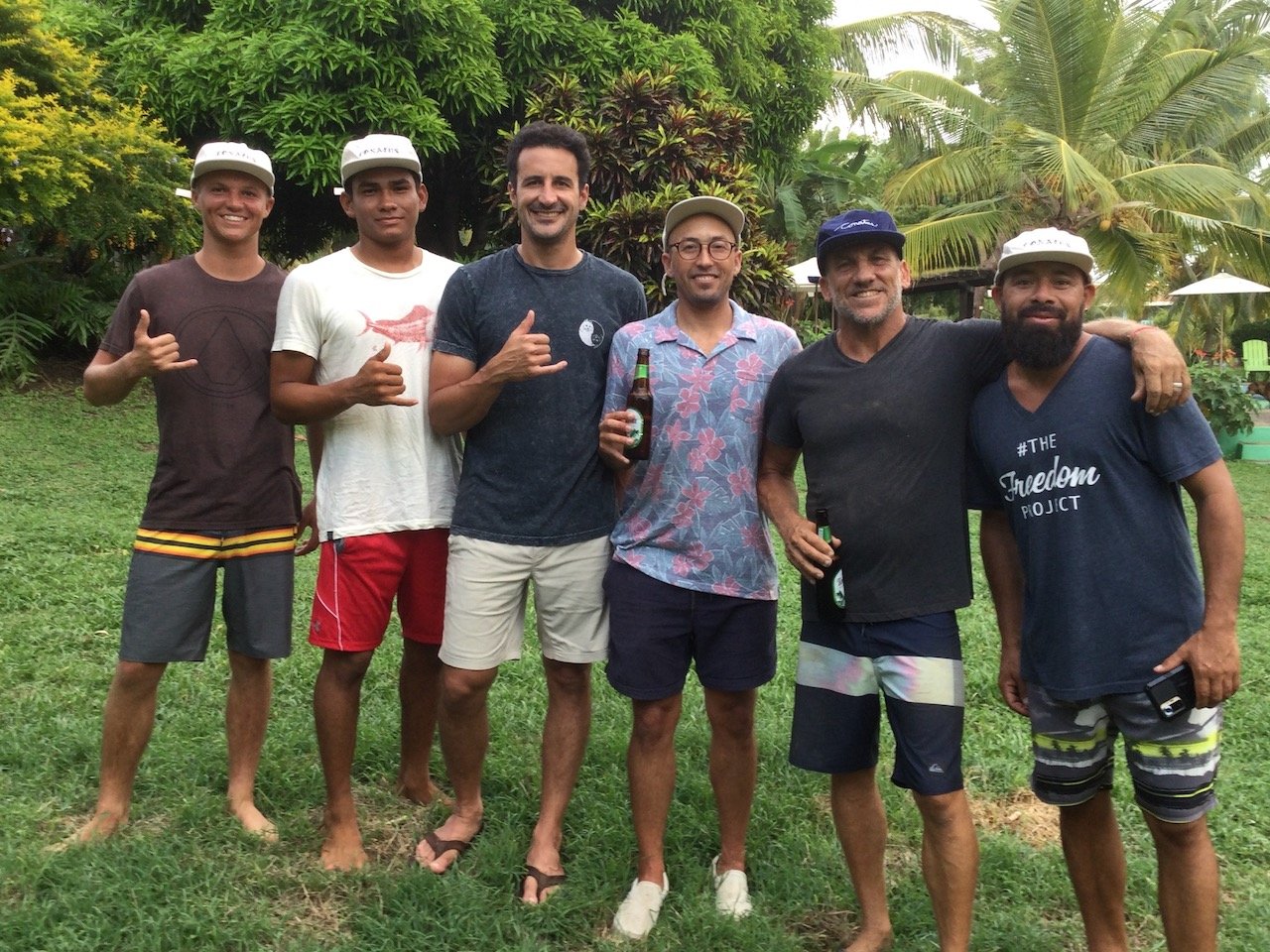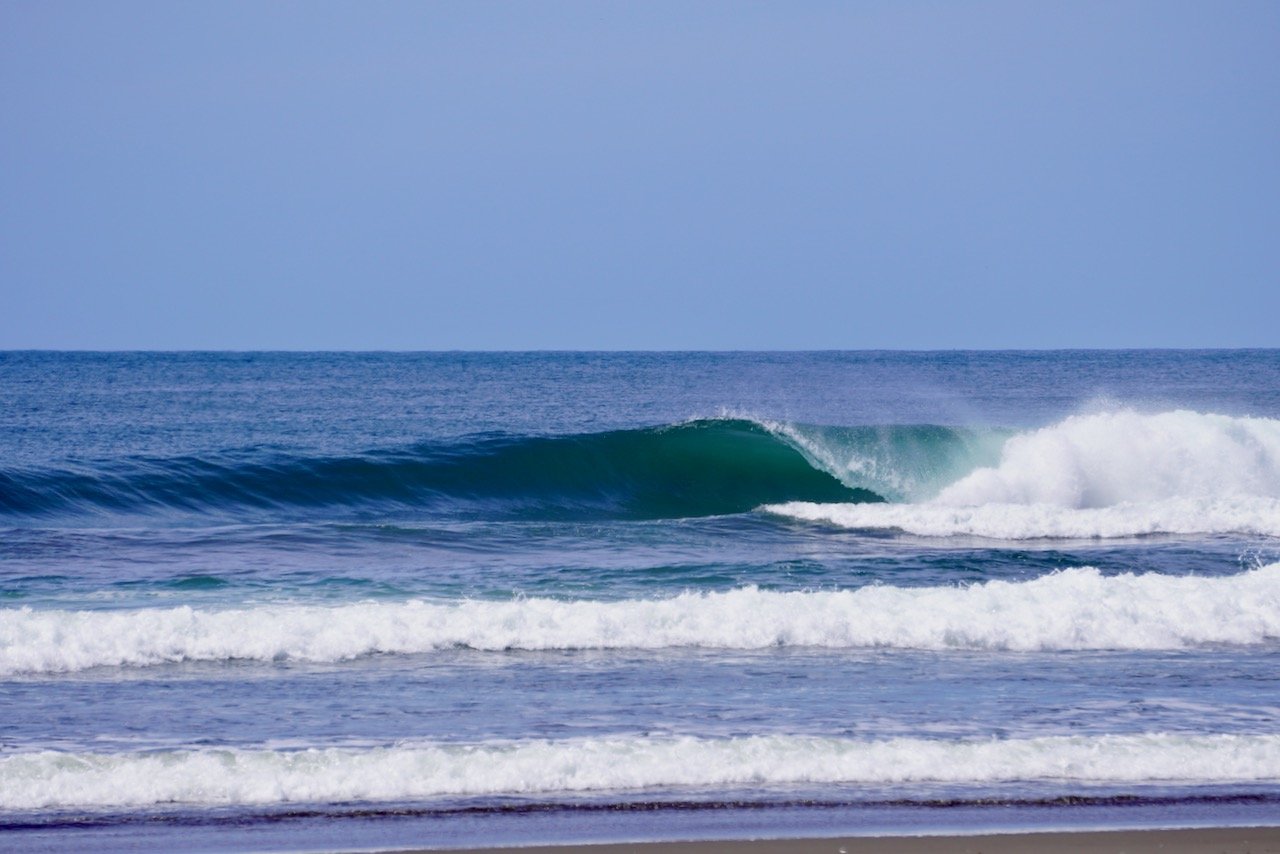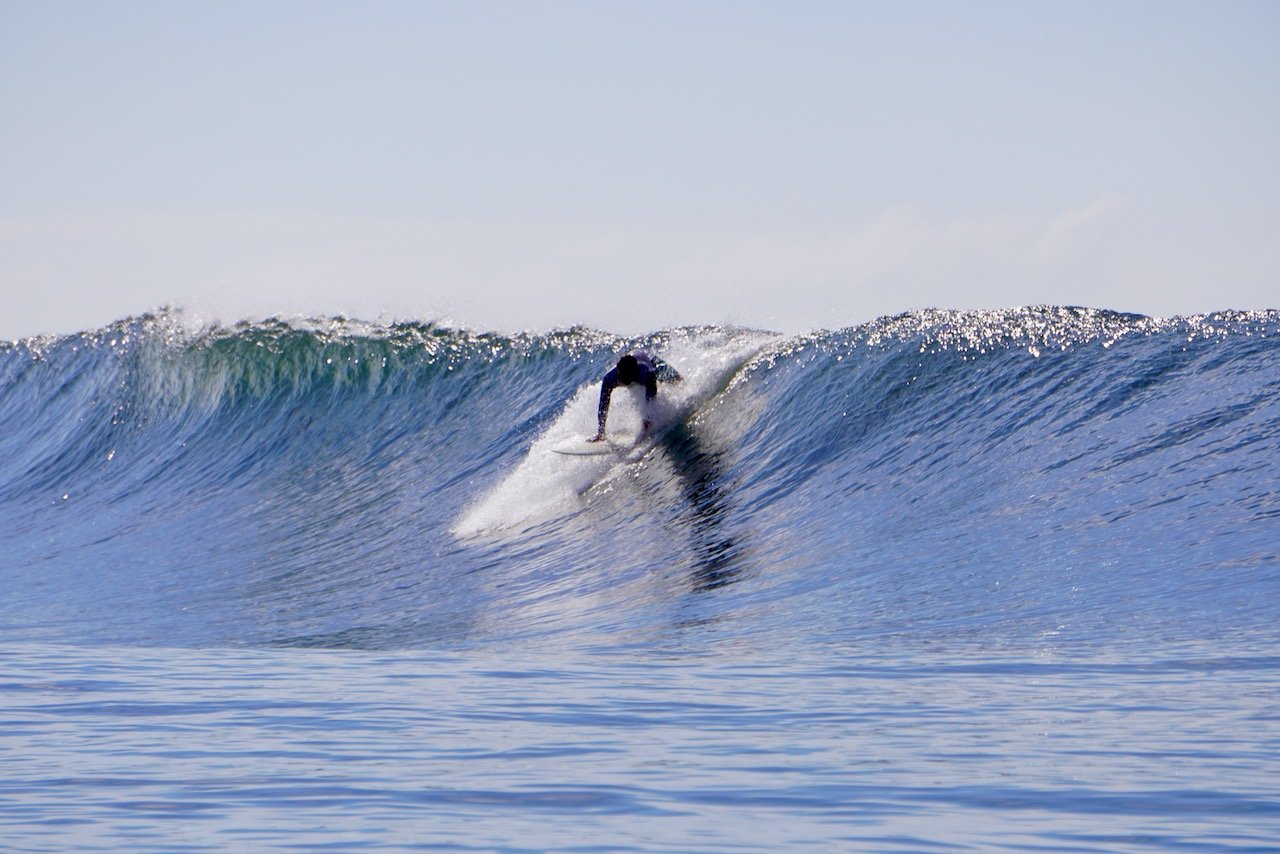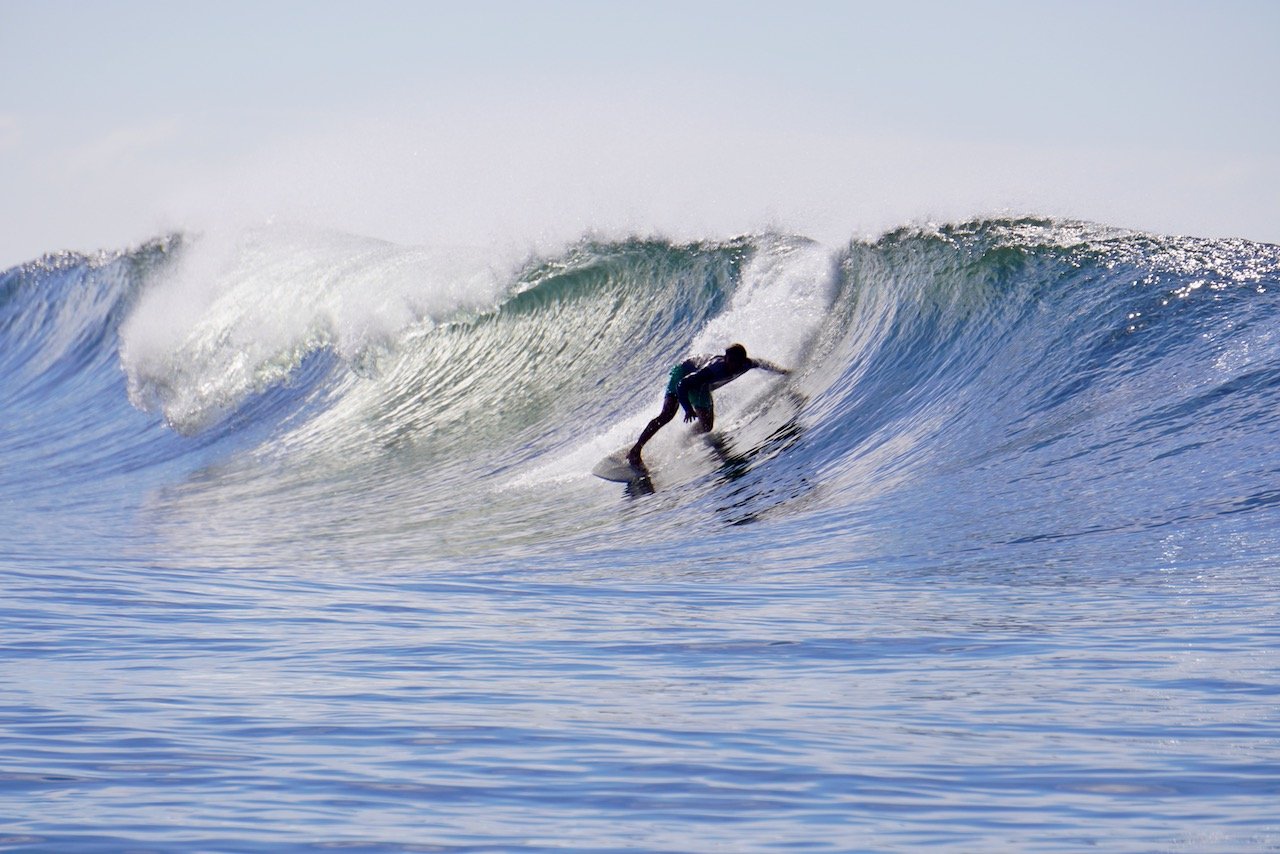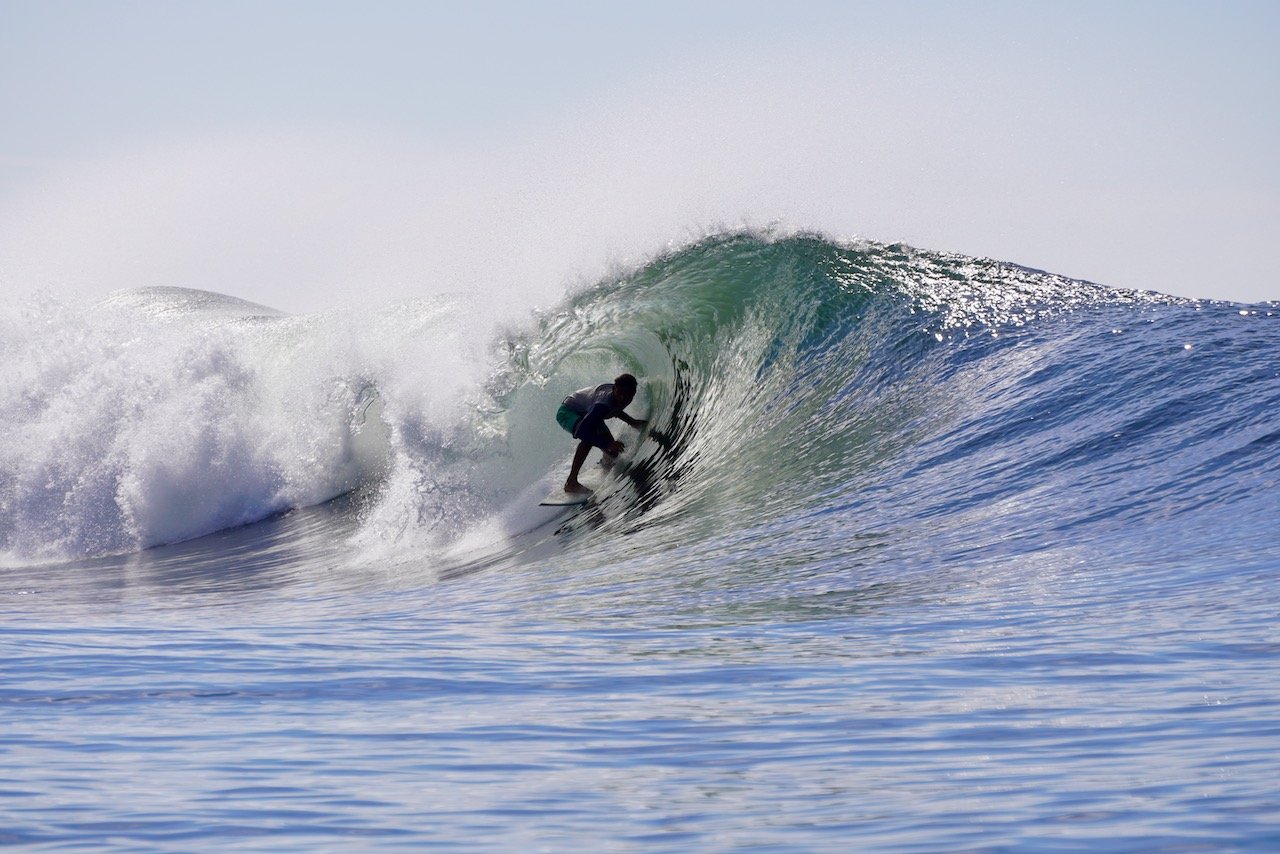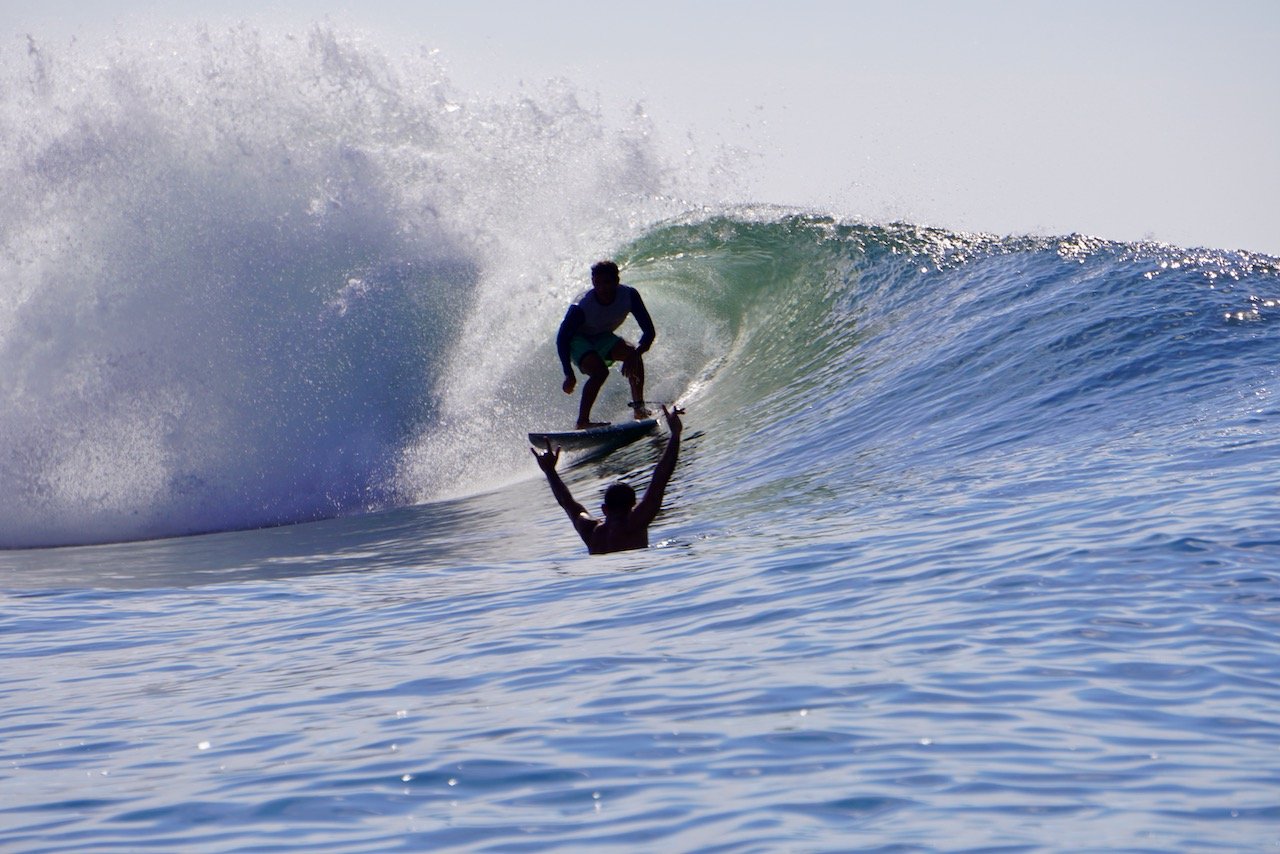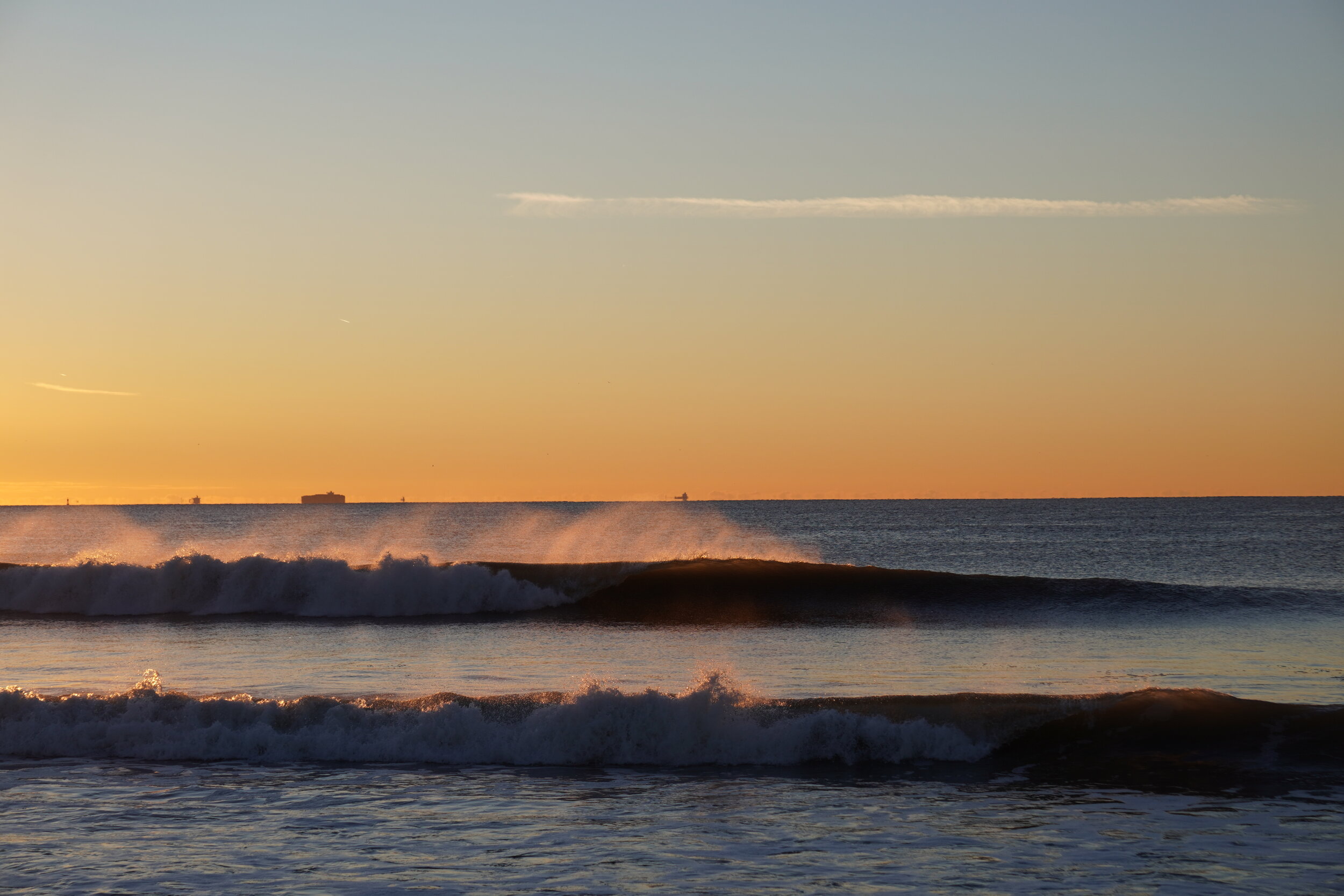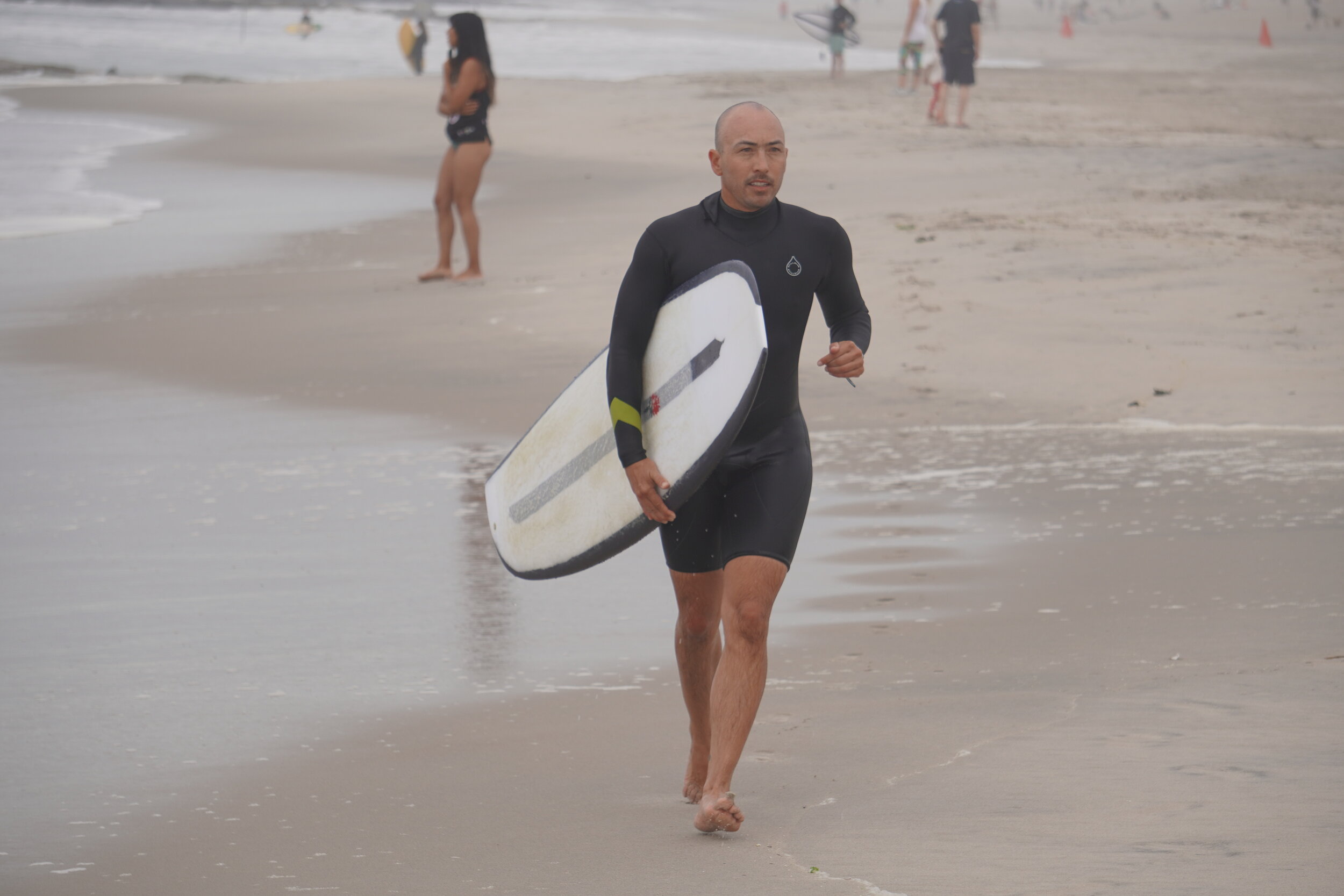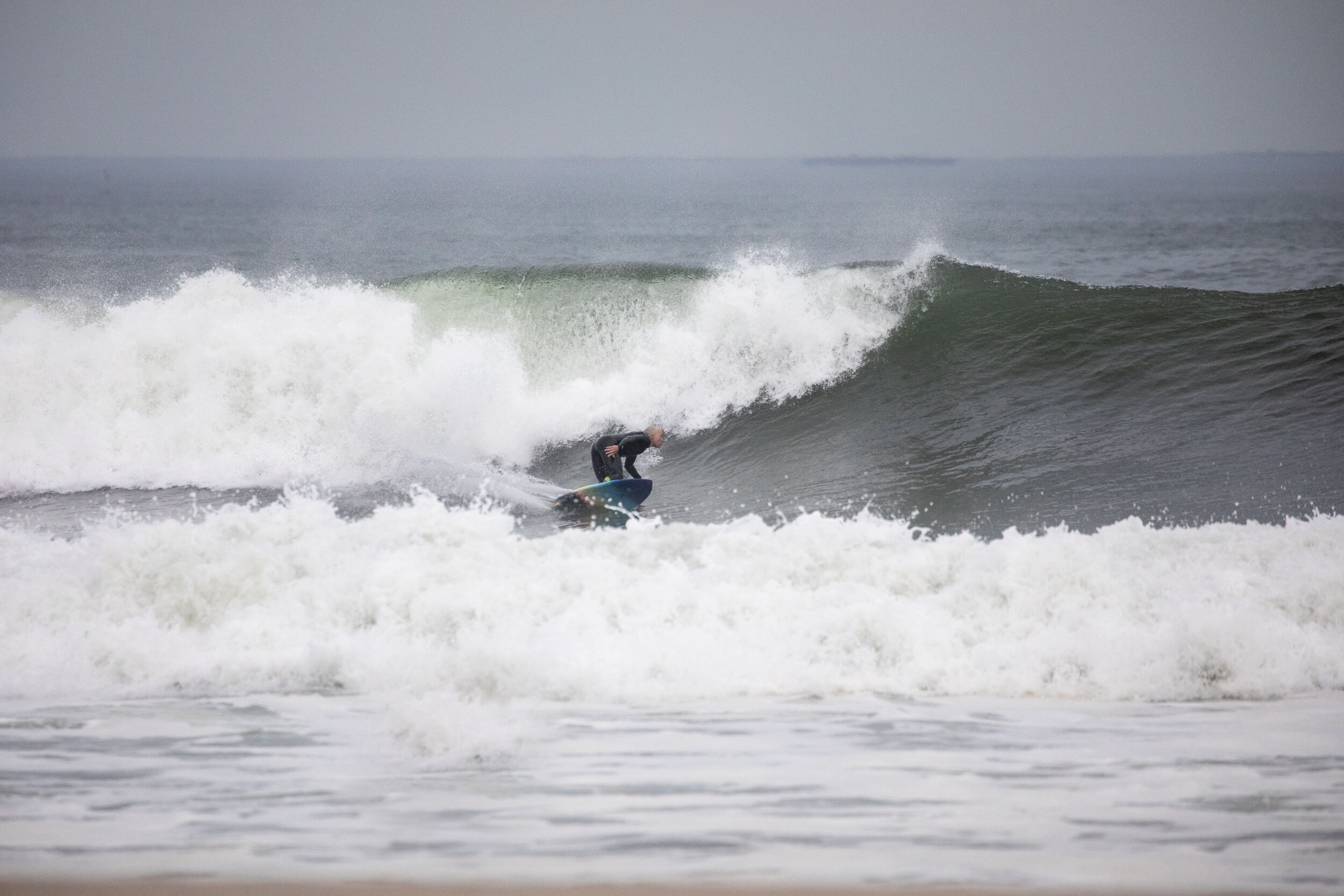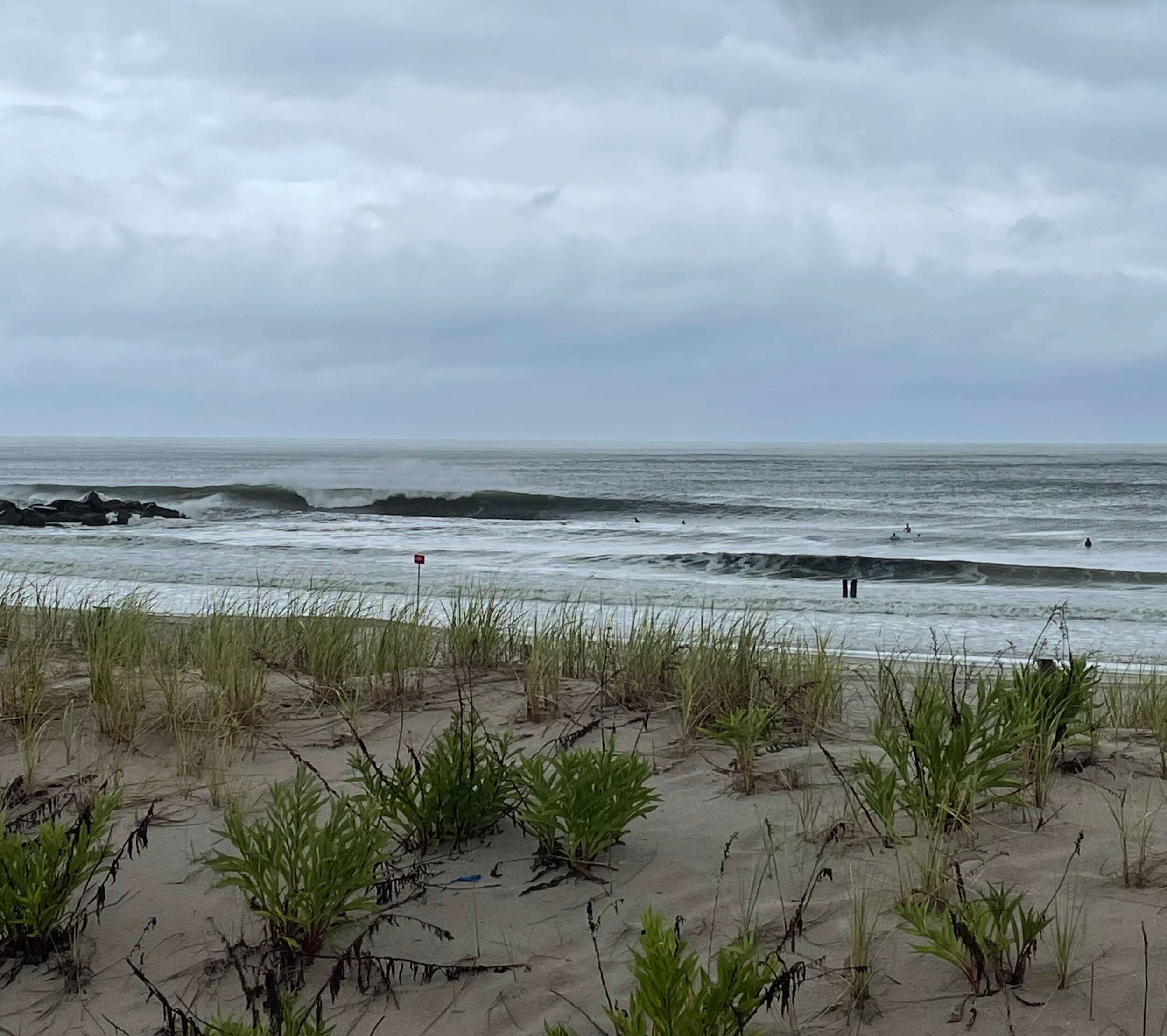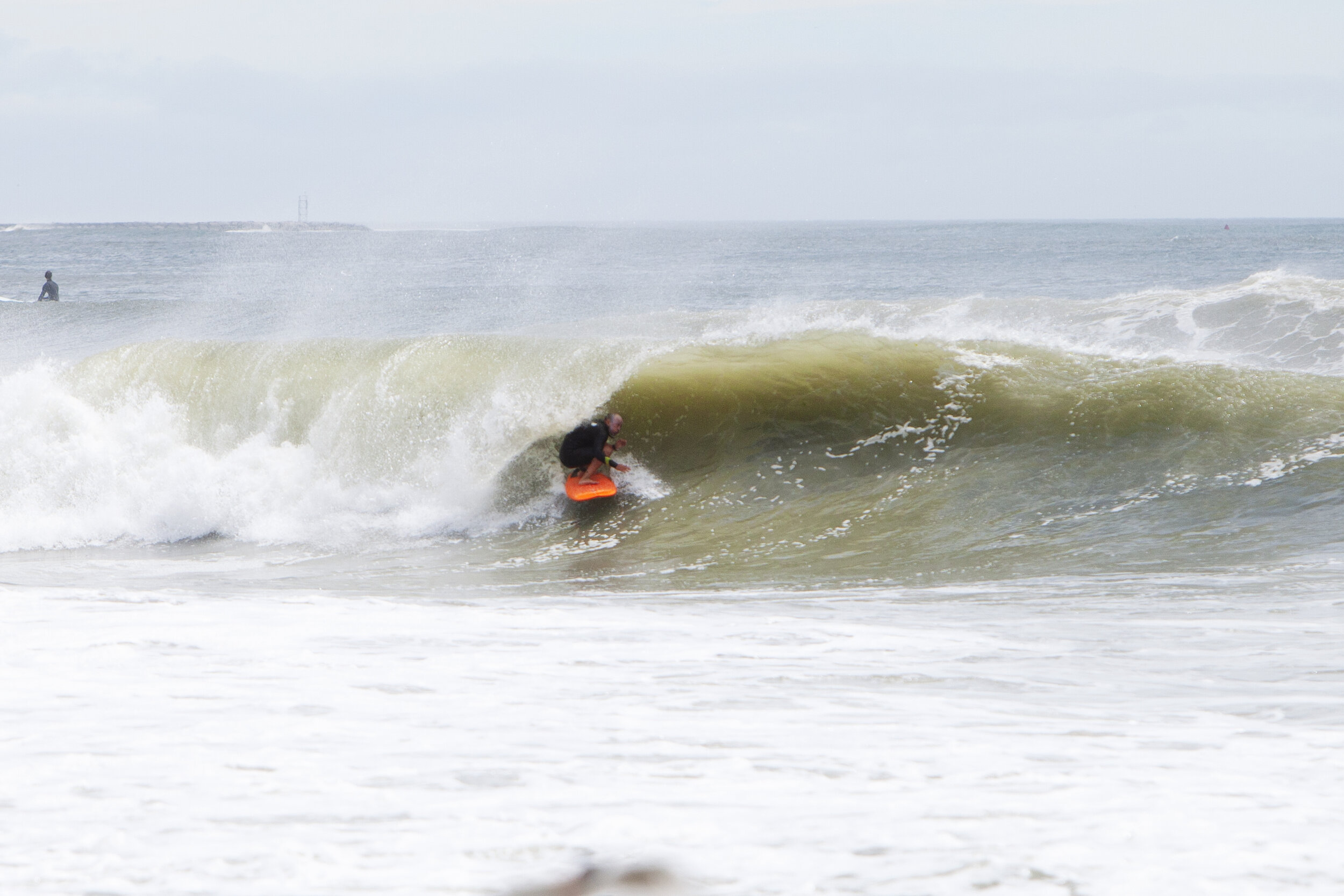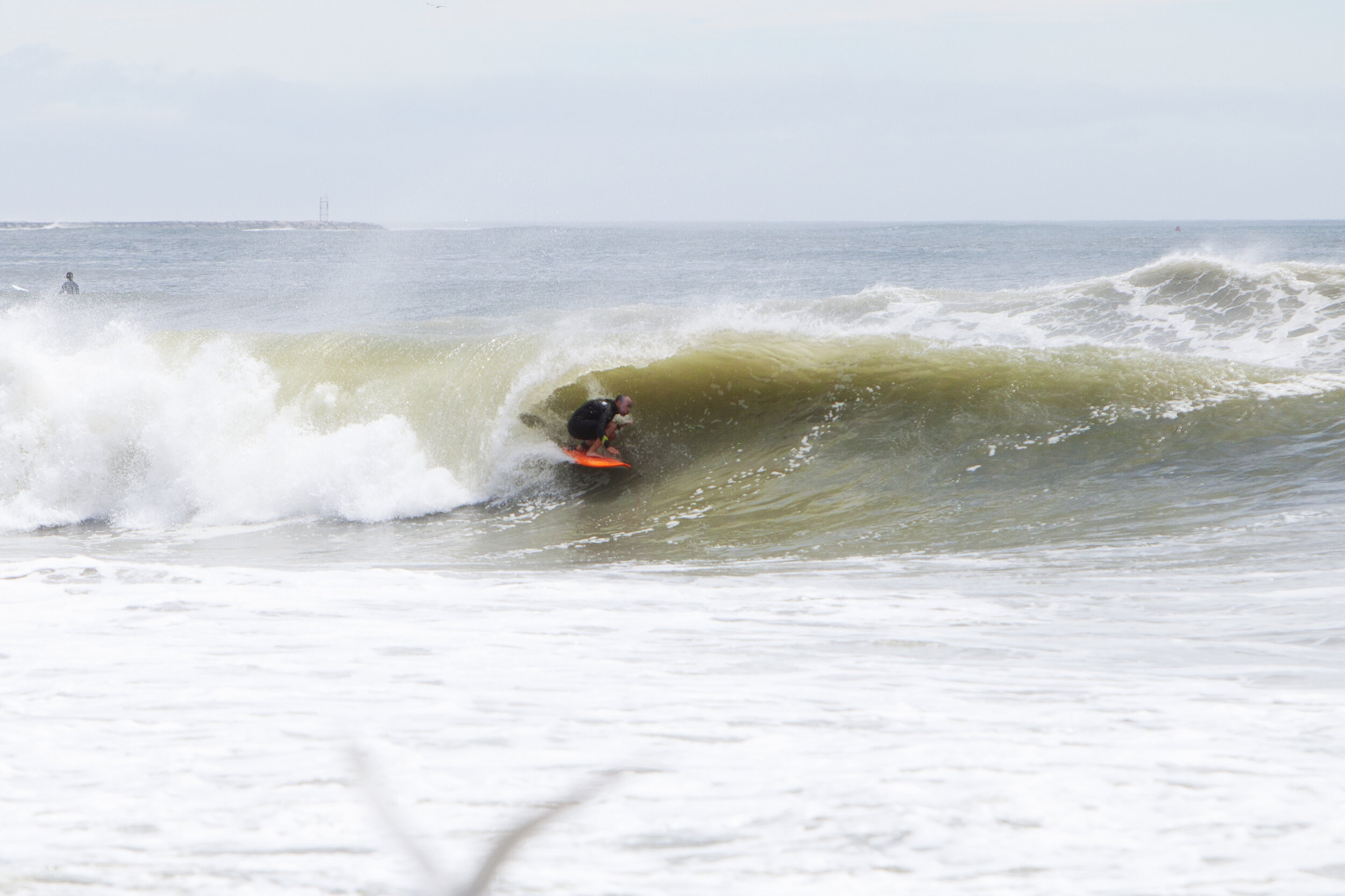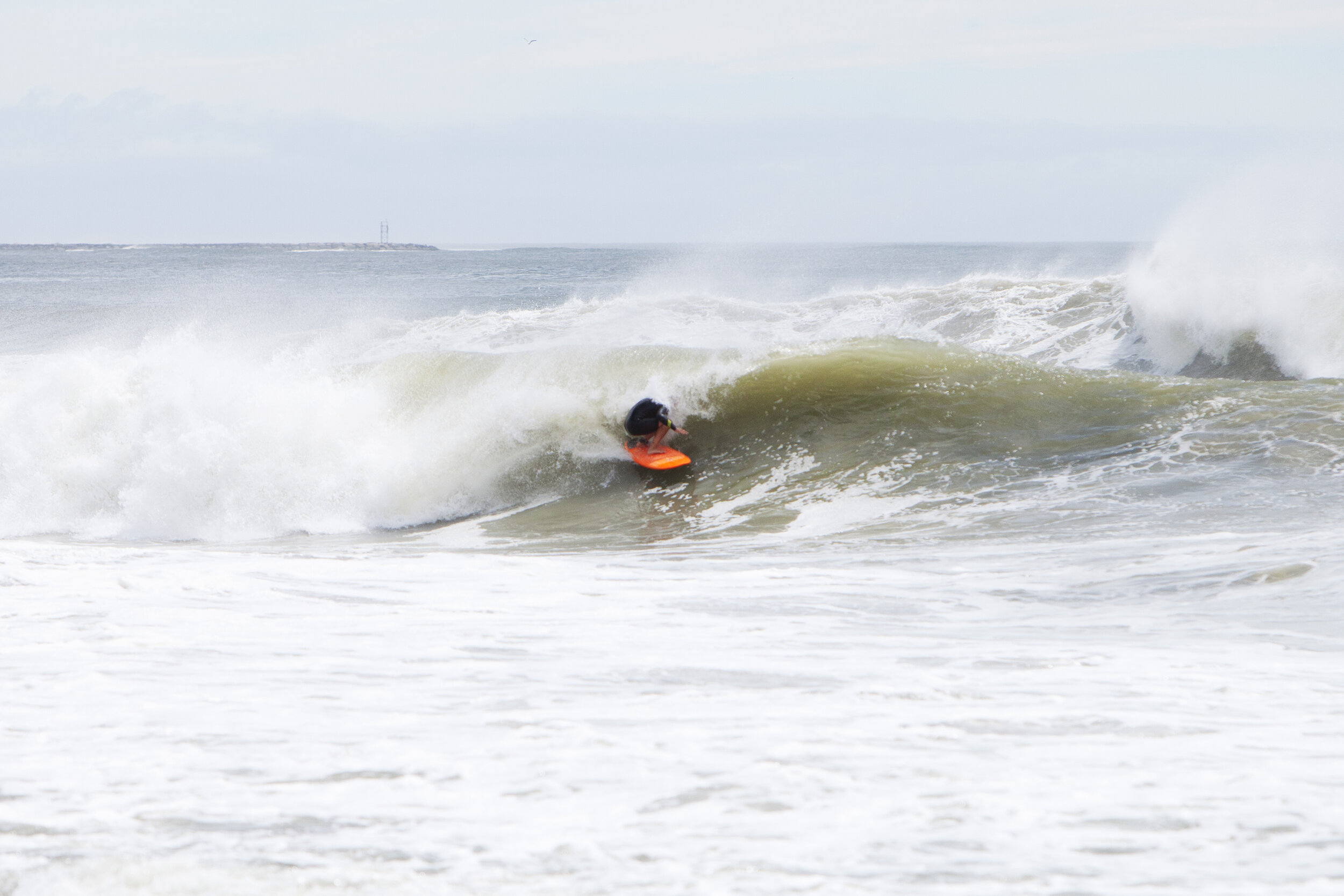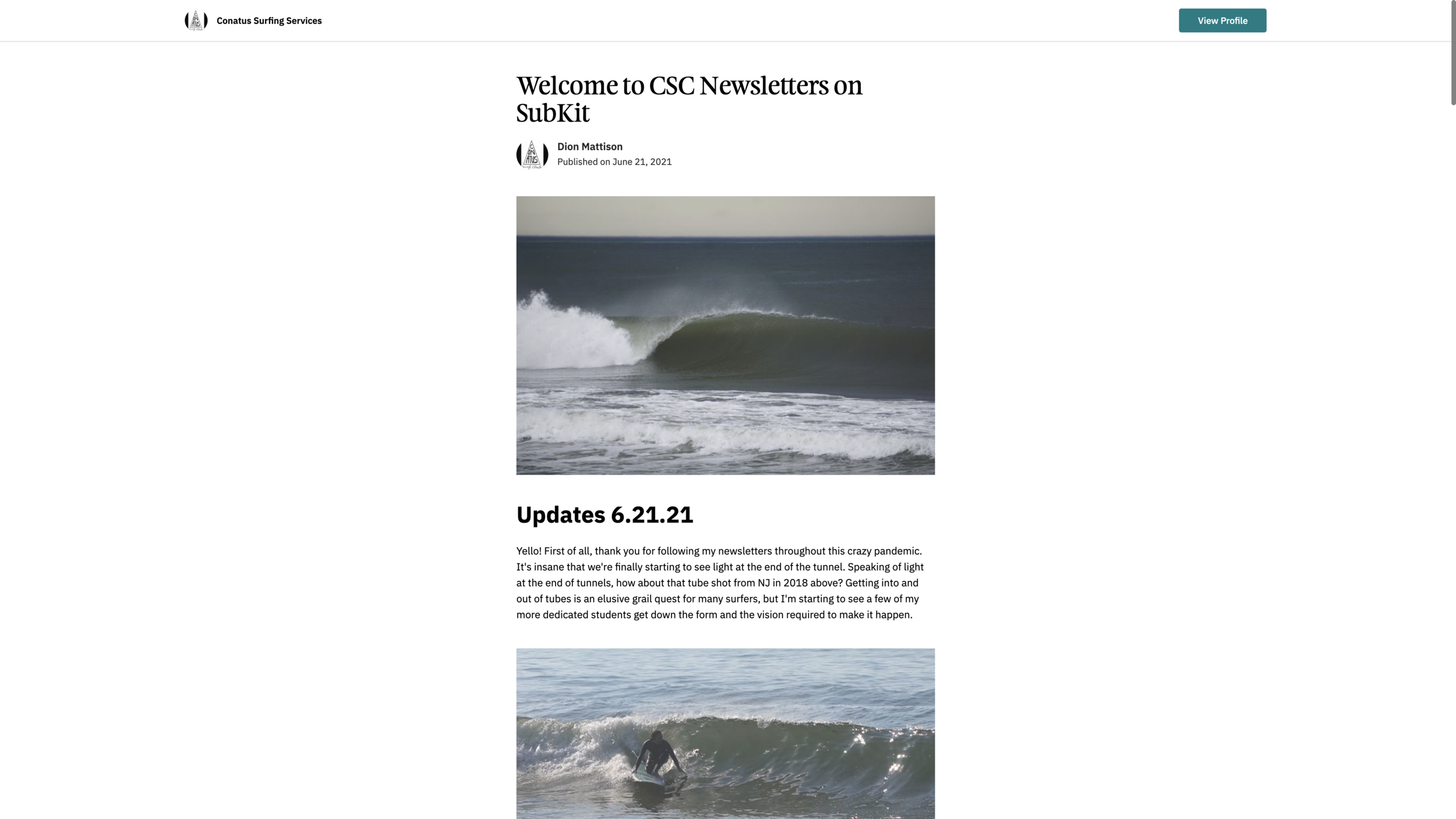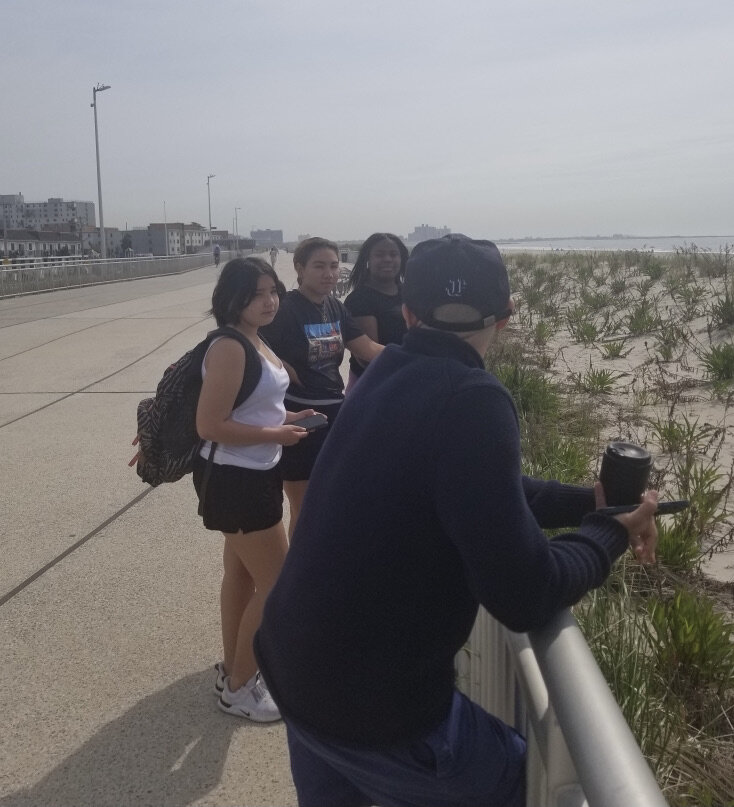The seal has been broken — I have traveled! This short and sweet trip to Chancletas Beach Resort in northern Nicaragua is the first I have taken since the pandemic broke out in March 2020. I just had to surf something other than New York, New Jersey, or Rhode Island for a moment. They sufficed more than enough for the past 18 months, but the travel bug set in, and I needed a change of scenery. At first this trip was just going to be solo, and then I thought, “Why the hell not just text a few friends who are either advanced surfers or intermediate clients and see if they want to do a surgical strike?” Most people could not swing it, but Bryce Rosner was itching for some consistent water time. He has an 18 month old child and this was going to be his first trip since becoming a new dad (and also his first trip during the pandemic), so he pressed go. We booked our flights on Avianca (the only airline currently flying to Nicaragua) for Nov 1-7. The 1st and 7th weren’t surf days due to the travel time needed to get from Managua to Chancletas and given the very interesting wind and tide cycles of northern Nica (more on those below).
Traveling during Covid is annoying, but it’s manageable. It’s just a new way of life now. 72 hours before leaving I took a PCR test from a Care Cube in Brooklyn ($225) and the results came 8 hours later, giving me ample time to submit them to airline. Bryce got his results from a City MD in 1 hour! We emailed our results to Avianca — they provide very clear instructions for how to do this, and after that we were cleared to travel. I brought a print out of my test with me, and Bryce forgot his print out, but the phone sufficed. For the return we brought Abbott Binax travel Covid tests that you take at home (or at the bar as the case may be) with a telehealth person. It’s a very basic process, but I had some nerves about it at first. Fortunately Loretta O’Brien, one of the owners of Chancletas, has done 6 million of these with clients, and she lead us through, what I now consider a super easy process, the day before we left. Overall getting through the Covid stuff was no big deal.
Shay and Loretta O’Brien are family to my great friend and amazing surfer, Juan Jose Heredia. Loretta is high school friends with Juan’s older sister, Maria. Maria and Loretta married two brothers, Jaymin and Shay O’Brien. Maria and Jaymin live in Brooklyn with their two boys, Otis and Yohan, and Shay and Loretta live in Nicaragua with their three girls, Jalen, Sashi, and Lila. Shay and Loretta purchased the property that houses Chancletas about 20 years ago, way before northern Nicaragua and the famous surf spot, “The Boom,” were on anyone’s surf radar. They started off as a hotel/restaurant and are now a fully operational surf camp with guided tours, 3.5 meals a day, a yoga deck, killer pool, and fun games on the ground like cornhole, bocci, and billiards (here is my request for a ping pong table!).
The pool is the maximum chill spot. Me reading philosophy (it’s our current book club read) with a cold Toña beer!
“The Boom” is a famous barreling wave just steps from Chancletas front porch. It only really works on high tides with offshore winds.
The rumor is that the Boom is a high tide spot. The other rumor is that the winds can be offshore all day in November in Nicaragua, so even if it’s not an ideal tide first thing in the morning, when it’s almost always offshore, you can still score it later in the day if the winds hold up. I have also seen pictures of it doing its thing at low tide, but after I arrived I learned that that is only when the surf is on the smaller side and the sandbars are set up for low tide, which is rare. The top to bottom tubes that most people travel to the Boom for happen at high tide, on really any size swell (even small ones), with offshore or no winds. The main wind cycle is offshore from dawn (530a) to about 9/10a, after which it comes on pretty hard onshore from the NW. Bryce and I booked on a low tide week, so that means it was low tide during the better wind times of day. Scoring the Boom was always going to be a gamble for us. At Chancletas there are two main packages: the Boom package and the guided package. The Boom package is cheaper because you just stay at the hotel and surf in front, and the guided package gets you two amazing local guides to explore different surf spots if the Boom isn’t working. Due to our tide cycle, we went for the latter (which by the way is super reasonably priced), and were glad we did. We checked and surfed about 7 spots altogether in our 5 full days there! Interestingly enough the best day we caught the Boom was our first full day. The wind stayed offshore until 2p and we were able to surf right on through the high tide. The swell was smaller and the sets were a little slow to come through, but when they did, wow. Gorgeous blue water, tubes to the left and the right, and plenty of fun sections to do turns on.
The middle part of our trip was mired by a storm system that developed off the coast of Costa Rica and sent the funkiest south wind bump on top of the south swell that was picking up. We had to explore a lot these three days. Most of what we surfed was affected by the funky lumps, but we made the most of the warm water. This curveball sent from mama Ocean caused me to be grateful that I had someone to coach, because if the trip was just for me I’d be bummed that I wasn’t getting tubed out of my mind every day. I also don’t mind surfing junky wedges and working on my cutbacks and end section repertoire, but at this point in my career I find those kinds of conditions almost ideal for coaching. It’s often less crowded and the tricky surf makes for a good challenge for the intermediate surfer working on fundamentals. Add the warm water and you have a perfect recipe for intermediate progress. It’s time in the water, and that’s what counts when you’re trying to become a proficient surfer.
Bryce off the boat at the river mouth soaking up his water time!
And working on his turn game in less than perfect conditions at Aposentillo.
So for the middle part of the trip we explored different spots near Chancletas and mostly surfed funky, lumpy storm surf, and had a blast doing so. The last day the swell came up and the tide cycle moved towards the higher end at dawn. I think it was high at 3a on the last full day of our trip. The Boom, however, didn’t want to really turn on for us. I gave it a go on the 6’6” Mencel twin pin gun I brought down with me just in case the Boom ended up looking like Pipeline. It had some Pipeline-esque moments that morning but for the most part was closed out. I felt I got really close to a great tube on one right, but the video shows that it wasn’t makeable. That makes me feel a little better about not making it! I was glad for the extra foam in the 6’6”. The conditions were shortboard-able, for sure, but I love the confidence slightly more foam gives me in difficult, hollow surf. You can see in the trip vid at the end of this post how easily I’m able to slide into them. The other two boards I brought were also twin fins. I don’t exclusively ride twins but dang do I love the way they feel! I just love the freedom of the water flowing off the back of the board.
Twin quiver: 6’6” Mencel, 5’8” Barahona, 5’3 Barahona
The shorter twins worked great in all the conditions we surfed. I left my favorite blue 5’3” for Carlos because I saw him struggle to figure it out. I didn’t see a lot of alternative style boards down there and thought it would be cool to introduce the locals to that style of surfing. I love Carlos’ approach, but from a coach’s perspective see how it can benefit from smoothing out and finding the kind of flow that fish boards require. They can’t be forced; they desire to be finessed.
After about 90 minutes the Boom was unsurfable and we headed out to “La Isla,” a little left point break in viewing distance from Chancletas. We gave the caretaker of the island some bread and soda in exchange for letting the local photographer, Saul Erazo, traipse over the land to shoot videos of us. Bryce and I also shot some video from the boat. This was the most fun surf of the trip besides the first day at the Boom with the offshore winds. It was a bit overhead and just easy as you like to get into them. We were the only ones out and the winds stayed good until almost 11a. Carlos bagged the tube of the trip (of course) and I caught the whole thing with my camera. Scroll through the sequence below to check it out:
There’s something special about surfing off of a boat, and this alone made the guided package more than worth it. What else? The food was great. We ate a ton of ceviche. The Toña beers were ice cold. The room was sparkling clean. We always had clean towels. Everyone we met was warm and friendly. The transfers to and from the airport with the driver, Victor, were stress free and efficient. I will be back, but I’ll be aiming for high tide in the morning! I want those tubes!
Ceviche and plantain chips, an appetizer staple at Chancletas.
Carlos and the feeling of anticipation when you’re paddling to an empty wave from a boat.
A herd of 230 cows making their way off the road in northern Nicaragua.
Young gun Jeovany Cadenas has all the moves.


